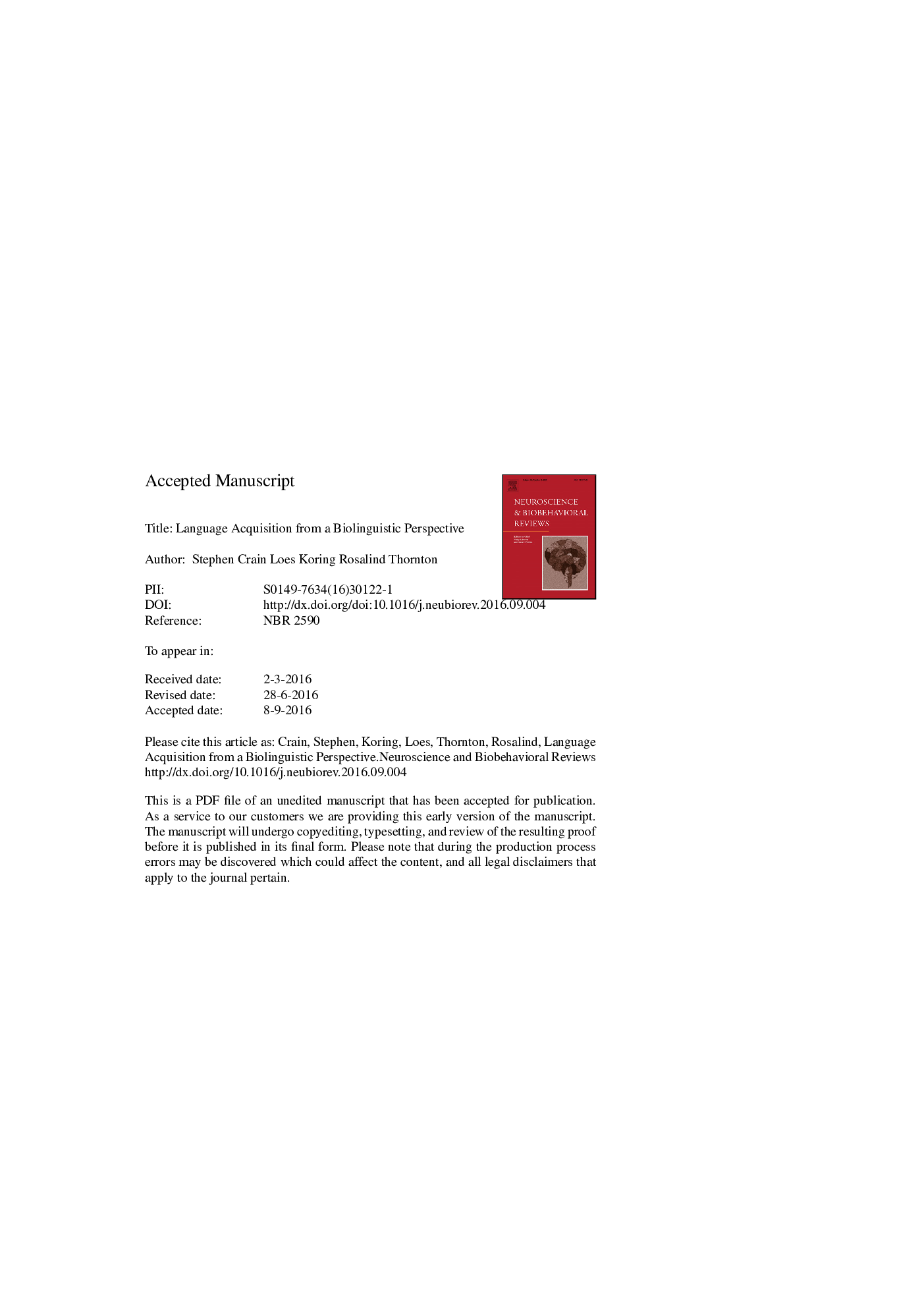| Article ID | Journal | Published Year | Pages | File Type |
|---|---|---|---|---|
| 7302601 | Neuroscience & Biobehavioral Reviews | 2017 | 128 Pages |
Abstract
This paper describes the biolinguistic approach to language acquisition. We contrast the biolinguistic approach with a usage-based approach. We argue that the biolinguistic approach is superior because it provides more accurate and more extensive generalizations about the properties of human languages, as well as a better account of how children acquire human languages. To distinguish between these accounts, we focus on how child and adult language differ both in sentence production and in sentence understanding. We argue that the observed differences resist explanation using the cognitive mechanisms that are invoked by the usage-based approach. In contrast, the biolinguistic approach explains the qualitative parametric differences between child and adult language. Explaining how child and adult language differ and demonstrating that children perceive unity despite apparent diversity are two of the hallmarks of the biolinguistic approach to language acquisition.
Related Topics
Life Sciences
Neuroscience
Behavioral Neuroscience
Authors
Stephen Crain, Loes Koring, Rosalind Thornton,
